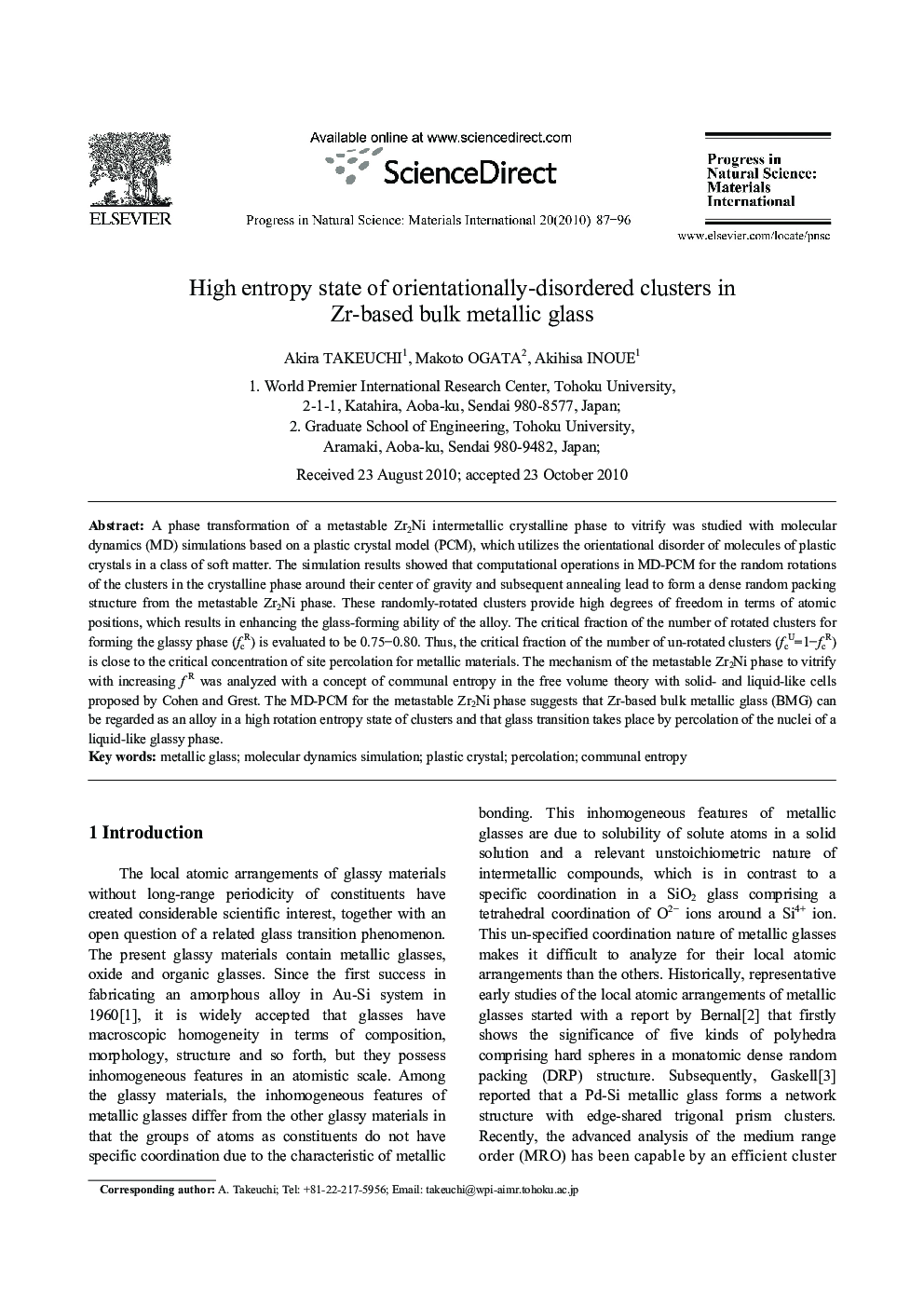| Article ID | Journal | Published Year | Pages | File Type |
|---|---|---|---|---|
| 1548794 | Progress in Natural Science: Materials International | 2010 | 10 Pages |
A phase transformation of a metastable Zr2Ni intermetallic crystalline phase to vitrify was studied with molecular dynamics (MD) simulations based on a plastic crystal model (PCM), which utilizes the orientational disorder of molecules of plastic crystals in a class of soft matter. The simulation results showed that computational operations in MD-PCM for the random rotations of the clusters in the crystalline phase around their center of gravity and subsequent annealing lead to form a dense random packing structure from the metastable Zr2Ni phase. These randomly-rotated clusters provide high degrees of freedom in terms of atomic positions, which results in enhancing the glass-forming ability of the alloy. The critical fraction of the number of rotated clusters for forming the glassy phase ( fcR) is evaluated to be 0.75–0.80. Thus, the critical fraction of the number of un-rotated clusters ( fcU=1−fcR) is close to the critical concentration of site percolation for metallic materials. The mechanism of the metastable Zr2Ni phase to vitrify with increasing fR was analyzed with a concept of communal entropy in the free volume theory with solid- and liquid-like cells proposed by Cohen and Grest. The MD-PCM for the metastable Zr2Ni phase suggests that Zr-based bulk metallic glass (BMG) can be regarded as an alloy in a high rotation entropy state of clusters and that glass transition takes place by percolation of the nuclei of a liquid-like glassy phase.
